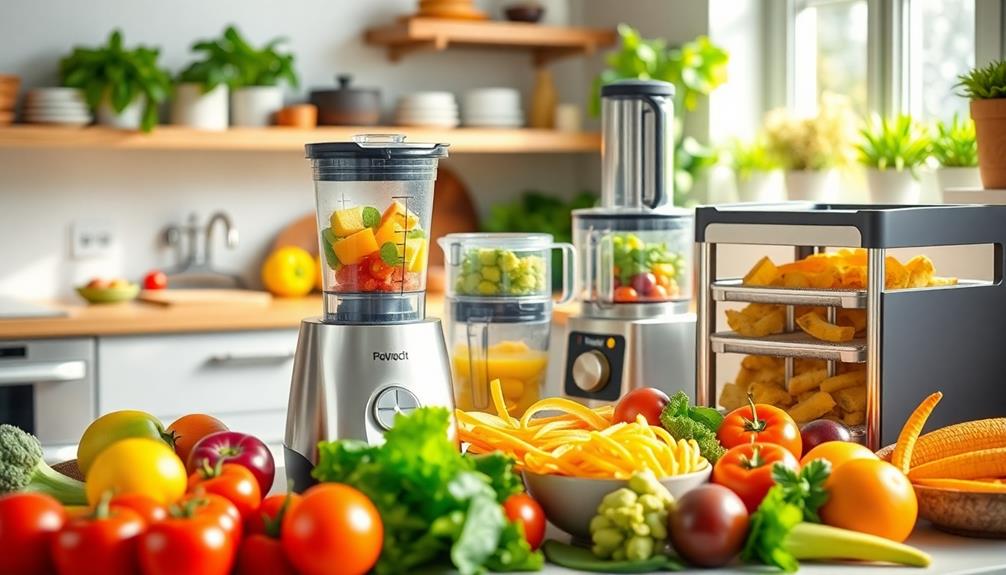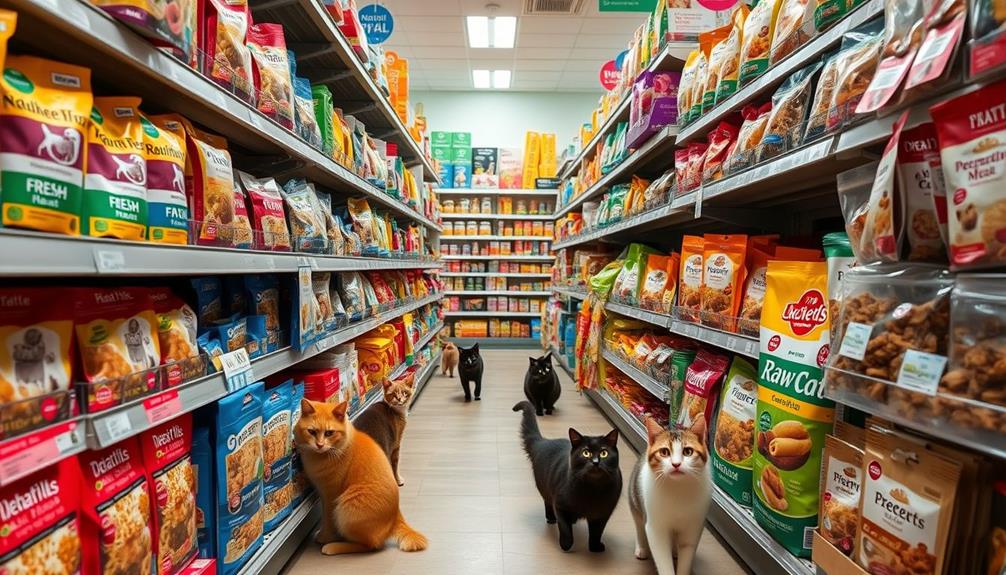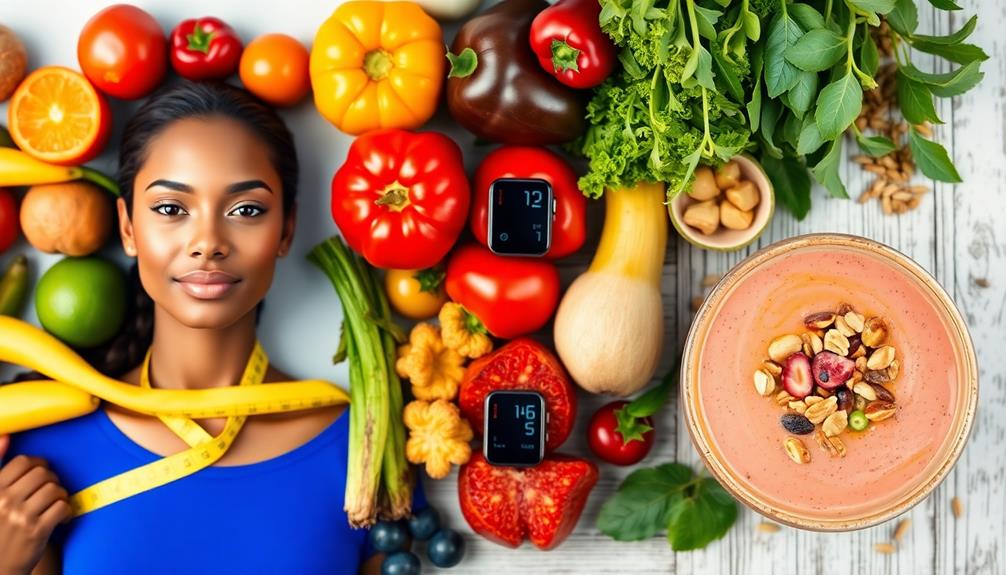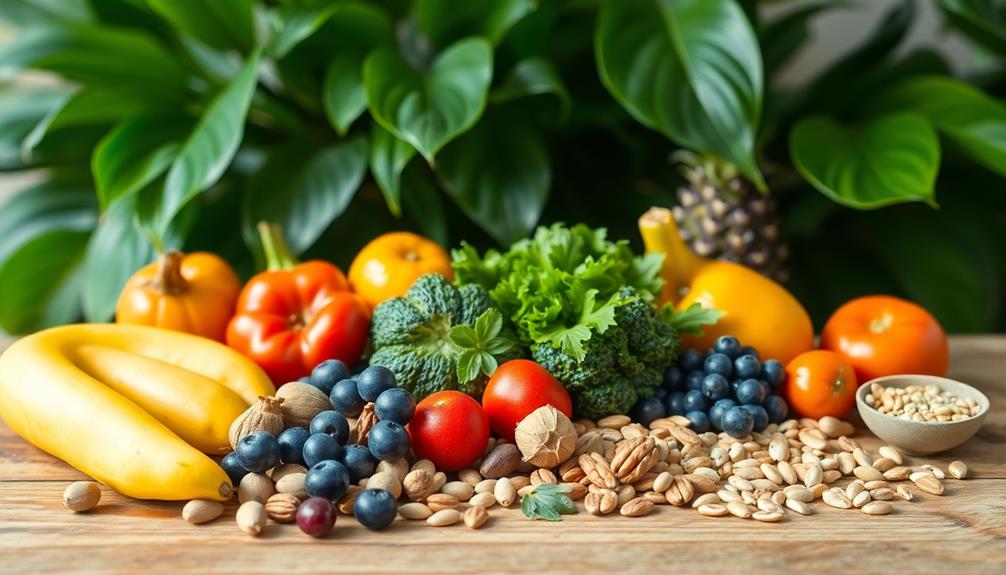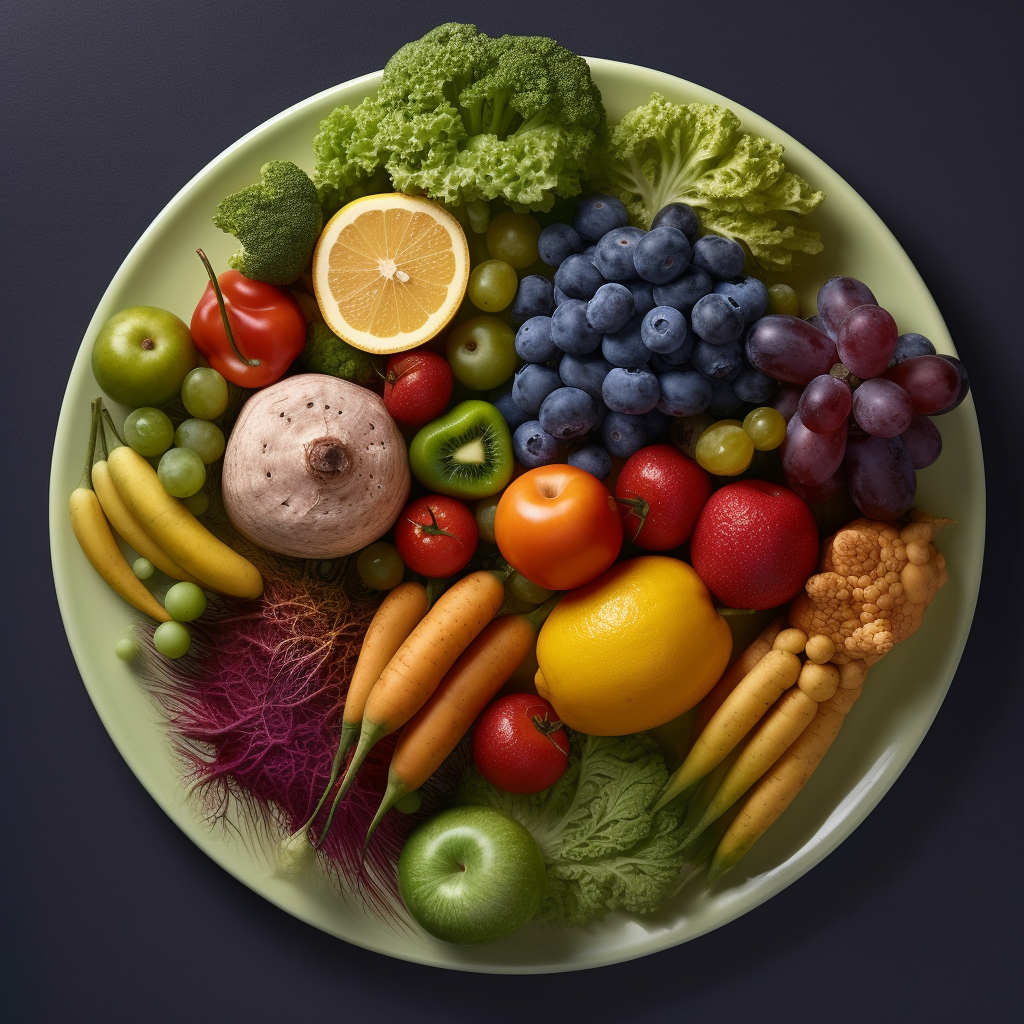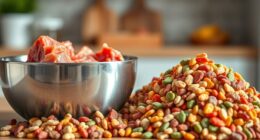To thrive in the raw food lifestyle, you'll need essential tools to streamline your meal prep. Start with a sharp chef's knife and a sturdy cutting board for chopping fruits and veggies. A high-speed blender, like the Vitamix 5200, is perfect for smoothies and soups. Don't forget a food processor for larger tasks and a dehydrator for preserving nutrients. Specialty items like a spiralizer or mandoline slicer can elevate your creativity. Proper storage solutions, including airtight containers and vacuum sealing, keep your ingredients fresh. Stick around, and you'll discover more tips to enhance your raw food journey.
Key Takeaways
- A high-quality chef's knife is essential for efficient chopping, making food preparation easier and more enjoyable in a raw food diet.
- A food processor, like the Cuisinart 14-Cup, streamlines tasks such as slicing, chopping, and mixing for larger batches.
- A high-speed blender, such as the Vitamix 5200, is crucial for creating smooth textures in soups, sauces, and smoothies.
- Utilize a dehydrator to preserve fruits and vegetables while retaining nutrients, extending shelf life for raw ingredients.
- Incorporate specialized tools like a mandoline slicer and spiralizer to enhance creativity and presentation in raw meals.
Essential Kitchen Tools
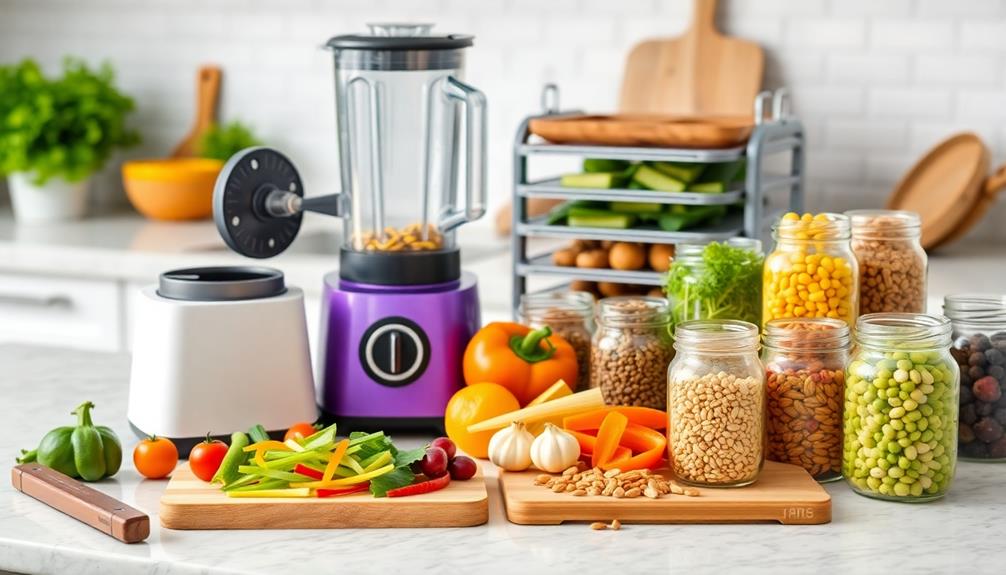
When diving into the world of raw food preparation, having the right kitchen tools makes all the difference. One essential tool is a high-quality chef's knife, like the ZWILLING Professional, which allows you to chop, slice, and dice efficiently.
Pair it with a sturdy cutting board—wooden boards are often favored for their antibacterial properties and ease of cleaning, protecting both your countertops and knives.
You'll also want to invest in a food processor, such as the Cuisinart 14-Cup model, perfect for handling larger batches and tasks like slicing, grating, and making nut butters.
For smoothies, sauces, and soups, a Vitamix blender is a cornerstone appliance, renowned for its versatility and performance in crafting delicious raw recipes.
Specialized Preparation Equipment
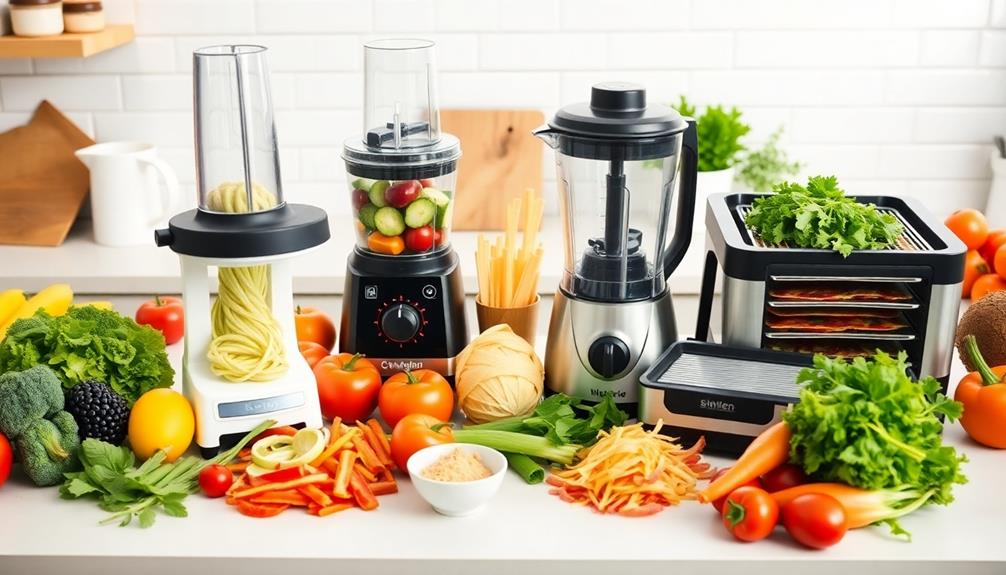
When you're preparing raw meals, having the right specialized tools can make all the difference in efficiency and presentation.
From mandoline slicers for uniform cuts to spiralizers that turn veggies into pasta, these versatile options elevate your kitchen game.
Additionally, incorporating fresh herbs can enhance flavor profiles, making your dishes even more vibrant and enjoyable, as seen in exotic fruit blends.
Let's explore how these essential tools can transform your food preparation methods.
Essential Specialized Tools
Mastering the art of raw food preparation relies heavily on the right specialized tools that enhance both efficiency and creativity in the kitchen.
One indispensable tool is the Mandoline Slicer, which allows you to achieve precise, uniform slices of fruits and vegetables, perfect for visually appealing dishes like zucchini noodles.
If you're looking to create vegetable pasta alternatives, a Spiraliser transforms zucchini or carrots into delicious, low-carb noodles effortlessly.
Don't overlook the Nut Milk Bag, which is superior to traditional options. A sturdy wine straining bag makes straining homemade nut milks and juices quick and efficient.
For preparing vegetable pasta, a good Peeler can be more effective than a Spiraliser, especially with softer vegetables.
Efficient Food Preparation Methods
Efficient food preparation methods are key to enhancing your raw food experience, and having the right specialized equipment can make all the difference. Using a food processor helps you chop, slice, and mix large quantities of ingredients effortlessly. Models like the Cuisinart 14-Cup are great for making your raw food recipes a breeze.
Here's a quick comparison of essential kitchen tools:
| Tool | Purpose |
|---|---|
| Food Processor | Efficient chopping and mixing |
| High-Speed Blender | Creating smooth textures for sauces/soups |
| Dehydrator | Preserving fruits and vegetables |
A high-speed blender, such as the Vitamix 5200, is vital for breaking down frozen and solid ingredients into velvety smoothies. For those looking to add creativity, a spiralizer transforms veggies into fun noodle alternatives, while mandoline slicers guarantee uniform cuts for salads. Finally, a dehydrator, particularly the Excalibur model, enhances food prep by preserving nutrients and extending shelf life. Investing in these tools guarantees you enjoy every aspect of your raw food journey.
Versatile Kitchen Equipment Options
Having the right tools not only simplifies food prep but also opens up a world of creativity in your raw food journey. A spiralizer is essential for crafting vegetable noodles, providing a fun and healthy pasta alternative. Models like the Zoodle Slicer are budget-friendly at around $9.99.
For precision, a mandoline slicer offers uniform, thin slices, critical for presentation in your raw dishes, with models like the OXO Chefs Mandoline Slicer 2.0 featuring 21 cutting options. Maintaining a clean kitchen environment enhances your food preparation experience and promotes a healthier lifestyle by supporting cleanliness and hygiene, which can be beneficial when preparing raw meals.
Health and wellness benefits are also improved in a tidy space, reducing stress and anxiety levels.
A reliable food processor is essential for chopping, slicing, and mixing ingredients efficiently. The Cuisinart 14-Cup model is highly recommended for its capacity and performance in raw food preparation.
To create smoothies, soups, and sauces, a high-speed blender like the Vitamix 5200 is indispensable. Its powerful motor blends tough ingredients into creamy textures with ease.
Lastly, a dehydrator, such as the Excalibur model, is perfect for preserving fruits and vegetables without cooking. It extends shelf life while maintaining nutrients, making it a staple in raw food kitchens.
Investing in these versatile kitchen equipment options will elevate your raw food experience considerably.
Blending and Juicing Devices

Blending and juicing devices are often at the heart of creating delicious and nutritious raw food dishes. Investing in a high-quality blender, like the Vitamix 5200, can transform your raw food diet by effectively breaking down frozen and solid ingredients.
These high-speed blenders are perfect for whipping up smoothies, soups, and sauces with incredible blending efficiency, ensuring creamy textures that elevate your meals. Additionally, for coffee enthusiasts who enjoy a fresh start to their mornings, consider incorporating best espresso machines under $1000 into your kitchen for a delightful caffeine boost.
When it comes to juicing, a reliable juicer is key to maximizing your nutrition. Masticating juicers, such as the Omega VRT, operate at lower RPMs, retaining more nutrients and producing juice with a longer shelf life than traditional centrifugal juicers.
If you're looking for convenience, consider the NAMA J2 juicer, which features a large hopper design, allowing you to juice whole fruits for maximum yield while making cleanup a breeze.
Both blending and juicing devices play significant roles in your raw food journey. By integrating these tools into your kitchen, you'll not only enjoy fresh, high-quality juices but also create vibrant, nutritious dishes that support your health goals.
Dehydration Equipment
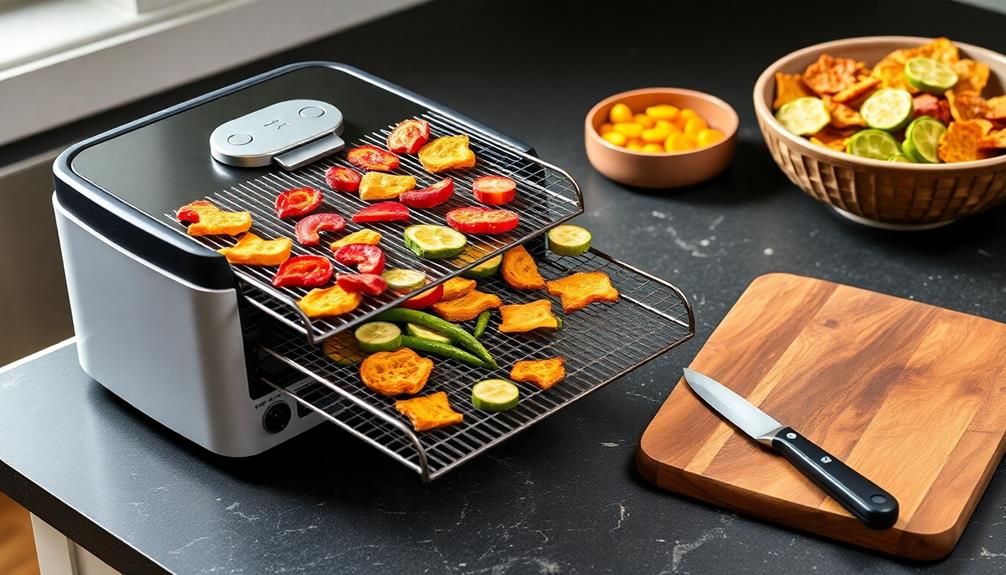
When it comes to preserving the flavors and nutrients of your fruits, vegetables, and herbs, a quality dehydrator is a game-changer. Investing in a reliable dehydrator, like the Excalibur, can seriously elevate your raw food diet.
With models featuring multiple trays, you can efficiently dry large batches of produce, extending shelf life and creating healthy snacks.
Here are some essential points to take into account when choosing dehydration equipment:
- Temperature Control: Look for dehydrators with digital settings, like the LEquip FilterPro, to optimize drying.
- Batch Size: Commercial dehydrators are quieter and better for larger batches, perfect for frequent use.
- Dehydration Techniques: Mastering proper techniques guarantees you retain maximum nutrients while making delicious snacks.
- Versatility: Use your dehydrator for fruits, veggies, and even herbs, enhancing your culinary options.
Storage and Preservation Tips
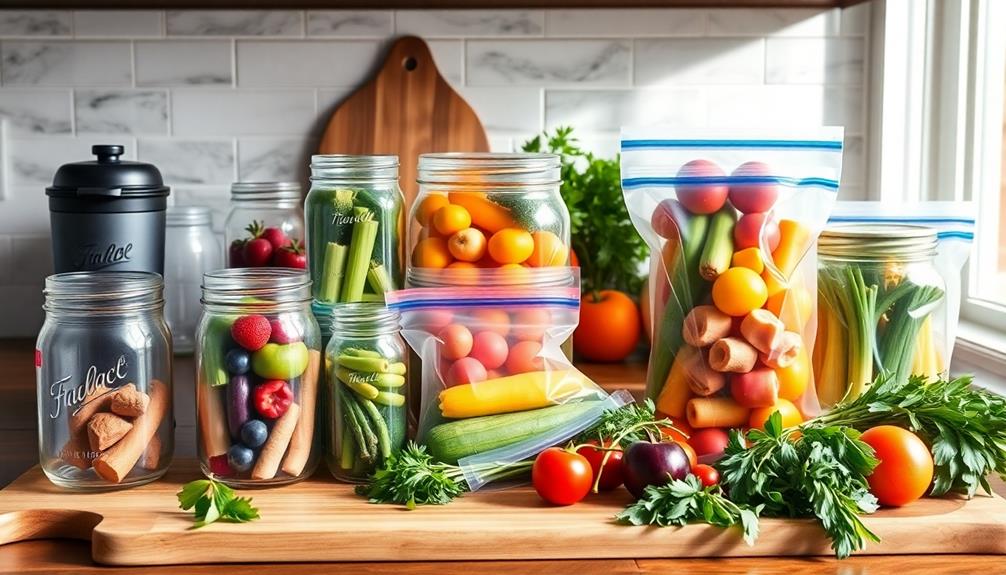
After mastering dehydration techniques, it's important to contemplate how to store and preserve your fruits, vegetables, and herbs effectively. Proper storage guarantees you keep their freshness and nutritional value longer.
| Storage Method | Best For | Duration |
|---|---|---|
| Cool, dark place | Fruits & vegetables | 1-3 weeks |
| Airtight containers | Nuts & seeds | Several months |
| Upright in water or damp towels | Herbs | Up to 1 week |
| Freezing | Excess fruits | Several months |
To extend the shelf life of fruits and veggies, store them in cool, dark places between 32°F and 40°F (0°C to 4°C). Nuts and seeds require airtight containers to prevent rancidity. For herbs, keeping them upright in water or wrapped in damp paper towels can greatly prolong their life.
If you have excess fruits, consider freezing them for smoothies or desserts, as freezing preserves both flavor and nutritional value. Dehydrators are also excellent tools for drying produce, effectively maintaining food quality while extending shelf life. By following these tips, you'll enjoy your raw foods longer!
Key Ingredients for Raw Diet
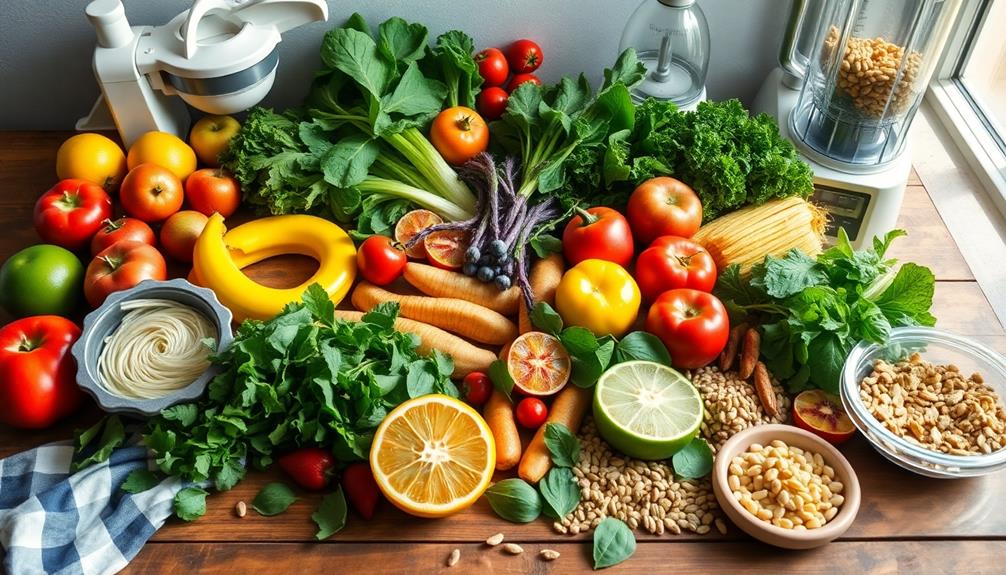
When you embrace a raw food diet, fresh produce becomes your go-to for nutrient density, packed with vitamins and enzymes.
Healthy fats and proteins from nuts and seeds are essential for keeping you satisfied and balanced.
Don't forget to add flavorful herbs and spices, which not only enhance your meals but also provide extra health benefits.
Nutrient-Dense Fresh Produce
Nutrient-dense fresh produce forms the backbone of a raw food diet, delivering essential vitamins, minerals, and enzymes that fuel your health and energy. By focusing on fresh fruits and vegetables, you guarantee your meals are packed with nutrients that support overall wellness.
Here are some key components to include:
- Fresh fruits and vegetables: These provide crucial nutrients and antioxidants.
- Whole grains: Quinoa and buckwheat are great options, bringing high fiber content to aid digestion.
- Herbs and spices: Not only do they enhance flavor, but they also offer anti-inflammatory benefits and additional antioxidants.
- Superfoods: Consider adding nutrient-dense options like spirulina and chia seeds to boost your meals.
Incorporating these elements creates a vibrant and balanced raw food diet.
While fresh produce is essential, remember to pair it with healthy fats and proteins to keep you satisfied and energized throughout the day. This combination will nourish your body and make your raw meals more enjoyable, guaranteeing you get the maximum benefits from every bite.
Embrace the variety and richness of nutrient-dense ingredients, and watch your health thrive!
Healthy Fats and Proteins
In a raw food diet, healthy fats and proteins play an essential role in maintaining energy levels and supporting overall health. You can easily incorporate these key ingredients into your meals by focusing on nutrient-dense options like nuts, seeds, and avocados.
Here's a quick reference table for some excellent sources of healthy fats and proteins:
| Ingredient | Healthy Fats (g) | Proteins (g) |
|---|---|---|
| Almonds | 14 (per ounce) | 6 (per ounce) |
| Walnuts | 18 (per ounce) | 4 (per ounce) |
| Avocados | 15 (per fruit) | 3 (per fruit) |
| Chia Seeds | 9 (per ounce) | 5 (per ounce) |
| Spirulina | 0 (per tsp) | 3 (per tsp) |
Nuts and seeds are crucial sources of healthy fats, while avocados offer heart-healthy monounsaturated fats. Chia seeds not only provide protein but also fiber, making them perfect for smoothies. Incorporating superfoods like spirulina enhances your protein intake, offering essential amino acids and nutrients. Embrace these ingredients for a balanced raw food diet!
Flavorful Herbs and Spices
Flavorful herbs and spices are essential for elevating a raw food diet. They not only enhance the taste but also boost the nutritional profile of your meals. By incorporating fresh herbs and spices, you can greatly enhance the nutrient density of your raw dishes while promoting a healthy diet.
Here are some key ingredients to reflect upon:
- Fresh herbs like basil, cilantro, and parsley are loaded with vitamins and antioxidants.
- Spices such as turmeric, ginger, and cayenne pepper add warmth and provide anti-inflammatory benefits.
- Superfoods like spirulina and chia seeds can increase protein and omega-3 fatty acid content.
- Experimenting with combinations helps you create exciting and diverse meals.
Using these ingredients can reduce your reliance on added salt or sugar, allowing you to enjoy bold flavors naturally.
Whether you're whipping up a vibrant salad or a zesty dip, don't shy away from getting creative with herbs and spices. The right blend can transform your raw dishes into culinary masterpieces, making your healthy diet both tasty and enjoyable.
Immerse yourself in the world of flavors, and let your raw food journey flourish!
Cultivating Raw Food Ingredients
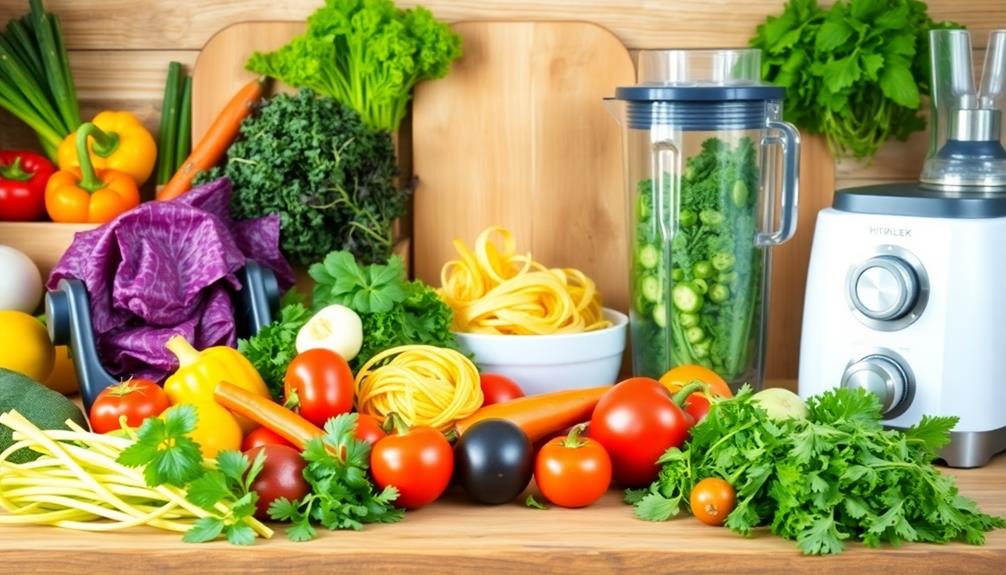
When you're looking to elevate your raw food dishes, cultivating your own ingredients like microgreens and sprouts can make a significant difference. Microgreens aren't only nutrient-dense but also incredibly easy to grow at home. All you need is a selection of seeds, such as kale, broccoli, or radish, and you'll enhance the nutritional value of your meals effortlessly.
For sprouts, use sprouting jars to soak dormant seeds, nuts, legumes, or grains for 3 to 5 days. This simple technique adds living foods to your diet, making your raw dishes more vibrant. Just remember to rinse your sprouts regularly and avoid submerging them completely to prevent mold growth. They'll provide a fresh crunch to salads and sandwiches.
If you're looking for quality seeds, consider sourcing from West Coast Seeds, which offers a wide variety of organic, non-GMO options that guarantee high germination rates.
Frequently Asked Questions
Can You Eat Peanut Butter on a Raw Food Diet?
Yes, you can eat peanut butter on a raw food diet, but make sure it's made from raw, unroasted peanuts. Look for labels that confirm it's raw, or blend your own for freshness.
What Does a Raw Diet Consist Of?
A raw diet consists of fresh fruits, vegetables, nuts, seeds, and whole grains. You'll enjoy vibrant flavors from herbs and spices, while superfoods boost your nutrient intake, making every meal healthful and delicious.
What Are Examples of Raw Foods?
When exploring raw foods, think fresh fruits, vibrant vegetables, nuts, seeds, sprouted grains, and flavorful herbs. Don't forget superfoods like spirulina and acai berries, which boost your nutrient intake and overall health!
Is Fermented Food Considered Raw?
Yes, fermented foods are considered raw since they're made from unprocessed ingredients and don't involve cooking. These foods, like kimchi and sauerkraut, retain their nutrients and offer probiotics that benefit your gut health.
Conclusion
In your journey to embrace raw food, having the right tools is like having a trusty compass on an adventure. Equip your kitchen with essential gadgets, from blenders to dehydrators, and watch your culinary creativity soar. Remember, it's not just about the equipment; it's about the vibrant ingredients that breathe life into your meals. So, immerse yourself, experiment, and relish the fresh flavors waiting to tantalize your taste buds. Your raw food adventure is just beginning!

